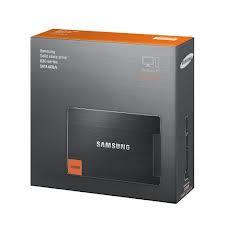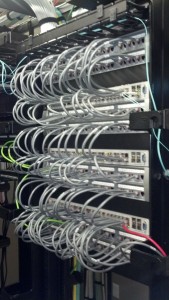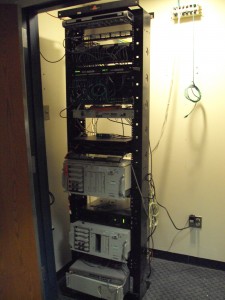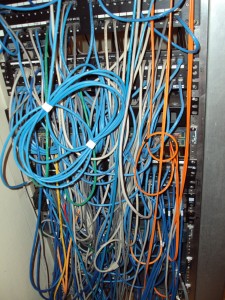 I fired up my virtual desktop (Windows XP) named DUMBO this morning for the first time in a few weeks.
I fired up my virtual desktop (Windows XP) named DUMBO this morning for the first time in a few weeks.
This is the machine I generally use to remotely connect to customer networks when I’m consulting – I don’t use my personal desktop for a number of reasons. The virtual desktop runs on a HP Proliant DL360 G5 running CentOS v6.3 with KVM along with a number of other test and development guest machines.
Anyway I had to spend the better part of 60 minutes patching the machine.
- Microsoft Security Updates (6)
- Mozilla Firefox (v15.0)
- Mozilla Thunderbird (v12.01)
- Adobe Flash Update (v11.4.402.265)
- Adobe Reader Update (v10.1.4.38)
- Oracle Java Update (SE 6 Update 35)
- LibreOffice (v3.5.6)
Obviously it’s critical that my desktop be clean of any unscrupulous software especially since I usually have complete access to the entire network and occasionally I’ll connect to an Active Directory resource as a Domain Administrator. I personally rely on a defense in depth approach making sure that all my software is up-to-date and employing a reputable Internet Security/Antivirus program. I’ve been using Kaspersky Internet Security for the past 3 years and it’s actually saved me on a number of occasions, usually from unscrupulous ad networks that were trying to exploit known vulnerabilities in Microsoft’s Internet Explorer or Mozilla’s Firefox.
The most recent security headline grabber was the zero-day vulnerability in Oracle’s Java software – along with the fix and patch. Many security experts are advising people to disable or uninstall Java if they don’t need it – the problem – users typically won’t really know if they need or use Java.
In February 2010 and January 2011 I wrote about a number of security threats and the alarming number of machines I was finding from neighbors and friends that were operating on the edge with either out-dated or missing Internet Security/Antivirus software. I’m sorry to say the trend hasn’t diminished at all. I’m seeing the same or worse in business and corporate networks where IT staffs are struggling to keep up with the “do more with less” mantra while security takes a back seat.
You only need to read the article entitled Inside a ‘Reveton’ Ransomware Operation by Brian Krebs and ponder the criminal possibilities.
There are a great many of us using our personal computers for electronic banking. I personally love the convenience and can’t remember the last time I was actually in a bank branch. However, with that convenience comes a lot of danger and added responsibility. If you have young kids using your personal computer I would strongly urge you to setup accounts for them without administrative access, many operating systems also have parental controls to help monitor your child’s activity.
Here’s my yearly reminder to everyone, spend a few minutes and make sure that the software on your laptop/desktop is up-to-date and that your Internet Security/Antivirus software is running properly. The few minutes (or few $$$$ renewing your Internet Security/Antivirus subscription) you spend now will likely save you from hours and days of frustration and heartache down the road.
Cheers!
References:
Secunia Personal Inspector
Secunia Online Software Inspector (requires Java)





